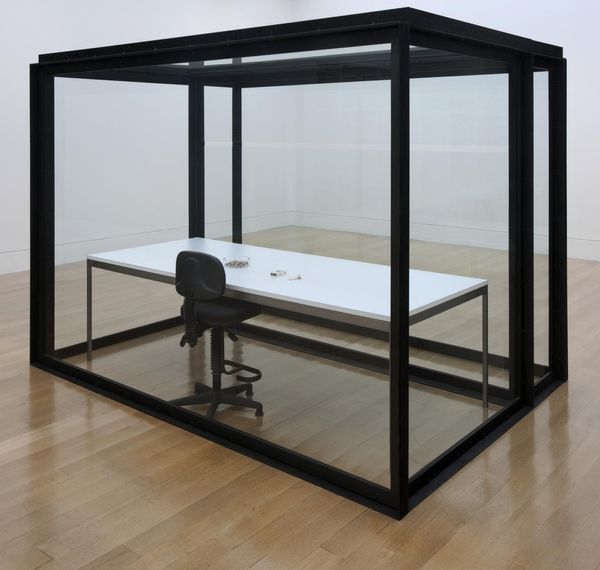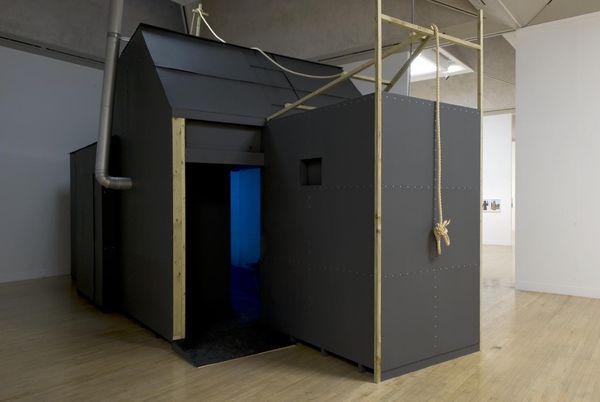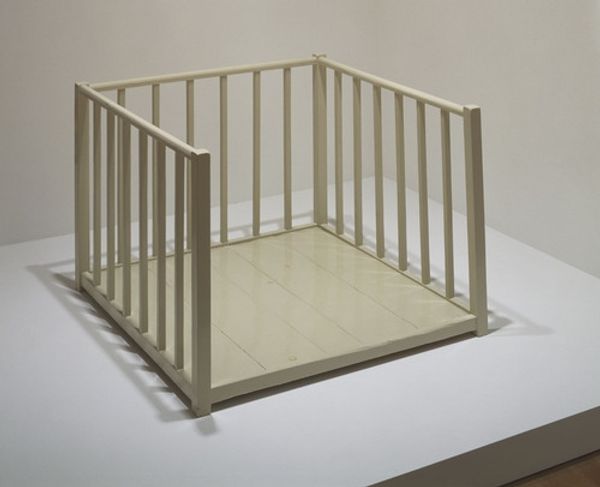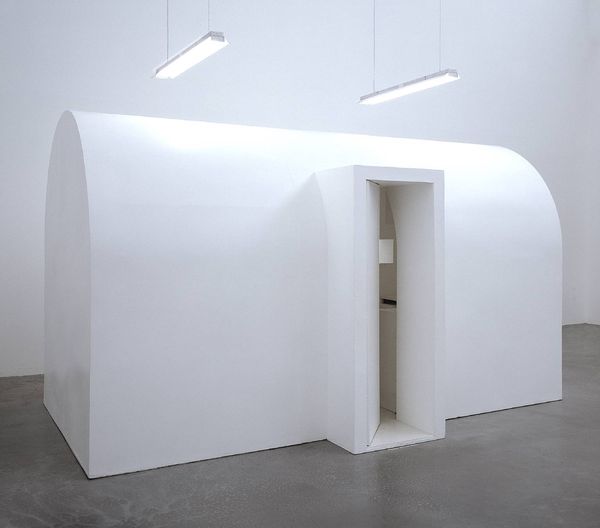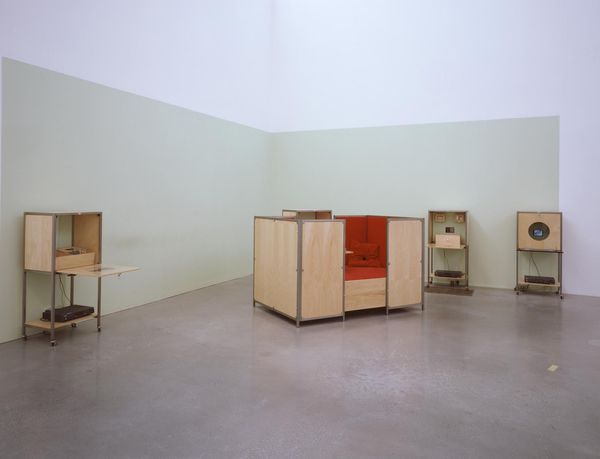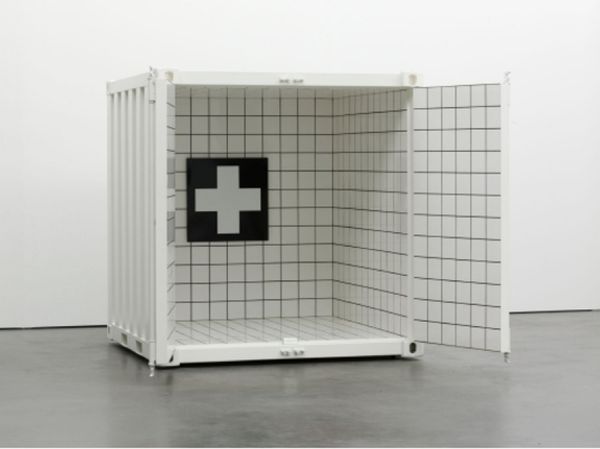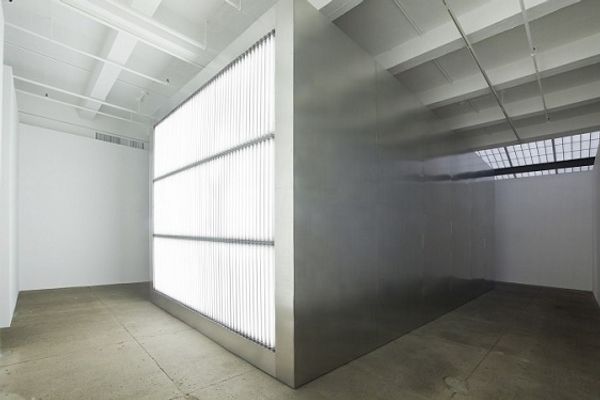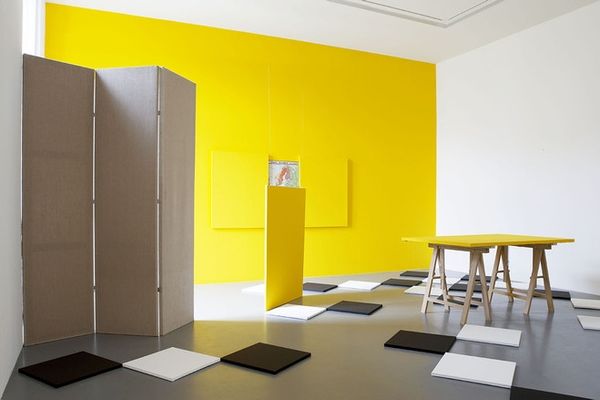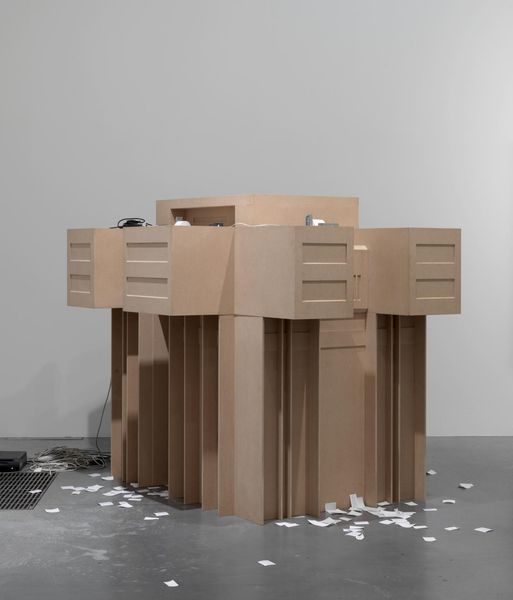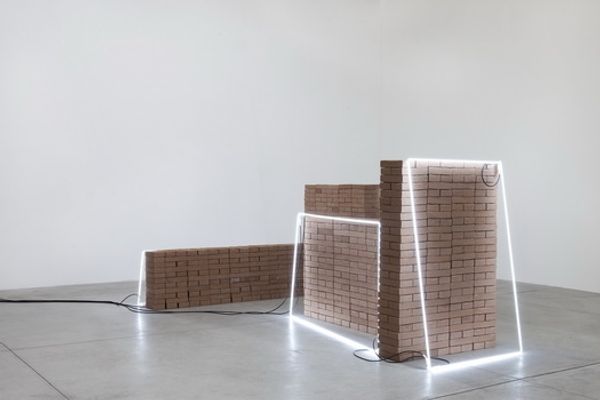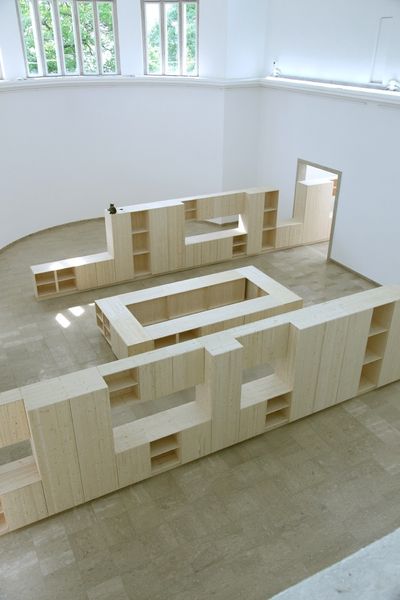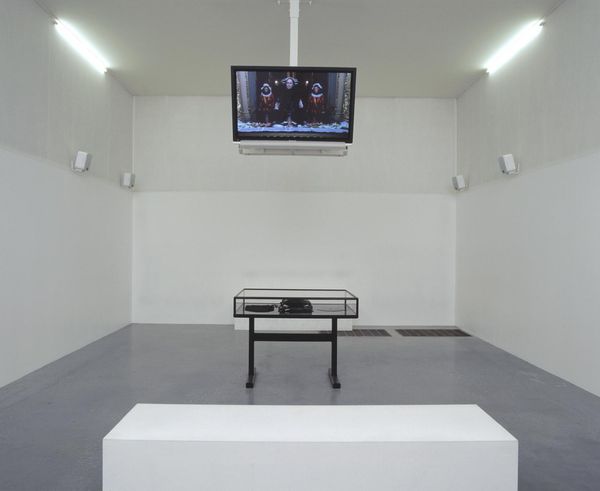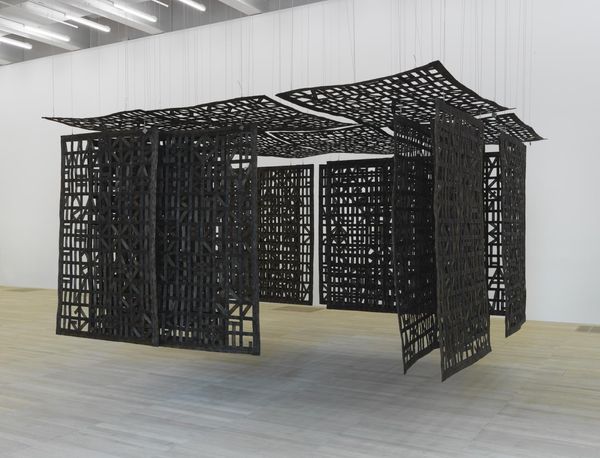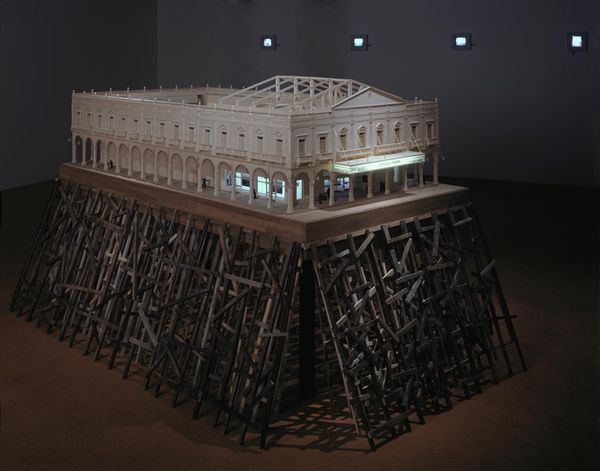
sculpture, installation-art
#
contemporary
#
minimalism
#
figuration
#
geometric
#
sculpture
#
installation-art
Copyright: Kent Monkman,Fair Use
Curator: We’re looking at Kent Monkman’s sculpture, “Minimalism,” created in 2017. It appears to be constructed from painted wood, metal bars, and light elements, arranged in a cube or cage-like structure containing a human figure. Editor: My first reaction is a sense of stark confinement. The geometric rigidity contrasts with the organic vulnerability of the figure inside. There's a tension between clean lines and what feels like a cry for help. Curator: Indeed, considering Monkman's broader oeuvre, it’s tempting to investigate the literal construction of this piece—the joining methods, material choices—alongside a deep inquiry into cultural commodification and objectification. The bars themselves are clearly fabricated from simple metal elements; note how regularly spaced and parallel they all are, devoid of unique characteristics, so devoid that they simply denote form rather than possessing an active texture. Editor: Absolutely. Contextualizing this within Monkman's body of work, it evokes his focus on colonial history and its ongoing impacts on Indigenous identity. I see it as a powerful statement about the prison industrial complex and the disproportionate incarceration of Indigenous peoples. The ‘minimalism’ becomes ironic—underneath the apparent aesthetic simplicity lies a complex system of oppression. The figure seems to be kneeling as if in prayer and I find that poignant, as it references traditional forms of hope while gesturing at its current and violent inefficacy. Curator: The fabrication is, in many ways, industrial. I am seeing repeating linear elements to suggest a system or process, a feeling intensified by that cold blue light filtering through. Editor: That’s precisely what generates a feeling of alienation. The interplay of illumination and confinement echoes the history of displacement and systemic disenfranchisement, and forces the question: Whose ‘minimalism’ are we discussing here? For whom is this form an aesthetic choice, and for whom is it a lived reality of restriction? Curator: Examining the piece’s surface shows a smooth paint finish versus the rawness of the steel components. Those surfaces imply different class positions within capitalism's historical development—do we know the studio assistants' working conditions and demographic profiles? Editor: Precisely—this work asks us to look beyond the immediate surface and confront uncomfortable truths. Curator: And the means of creating, producing, buying, and selling those elements! I am seeing a chain of implications here, as the artwork prompts us to reckon with not only Indigenous histories, but capitalist social stratification that enabled Minimalism to manifest. Editor: This installation challenges the neutrality often associated with minimalist aesthetics, compelling us to see it instead as a vehicle for amplifying silenced voices. A bleak look on the relationship between culture and the economy! Curator: A chillingly vital provocation indeed.
Comments
No comments
Be the first to comment and join the conversation on the ultimate creative platform.
